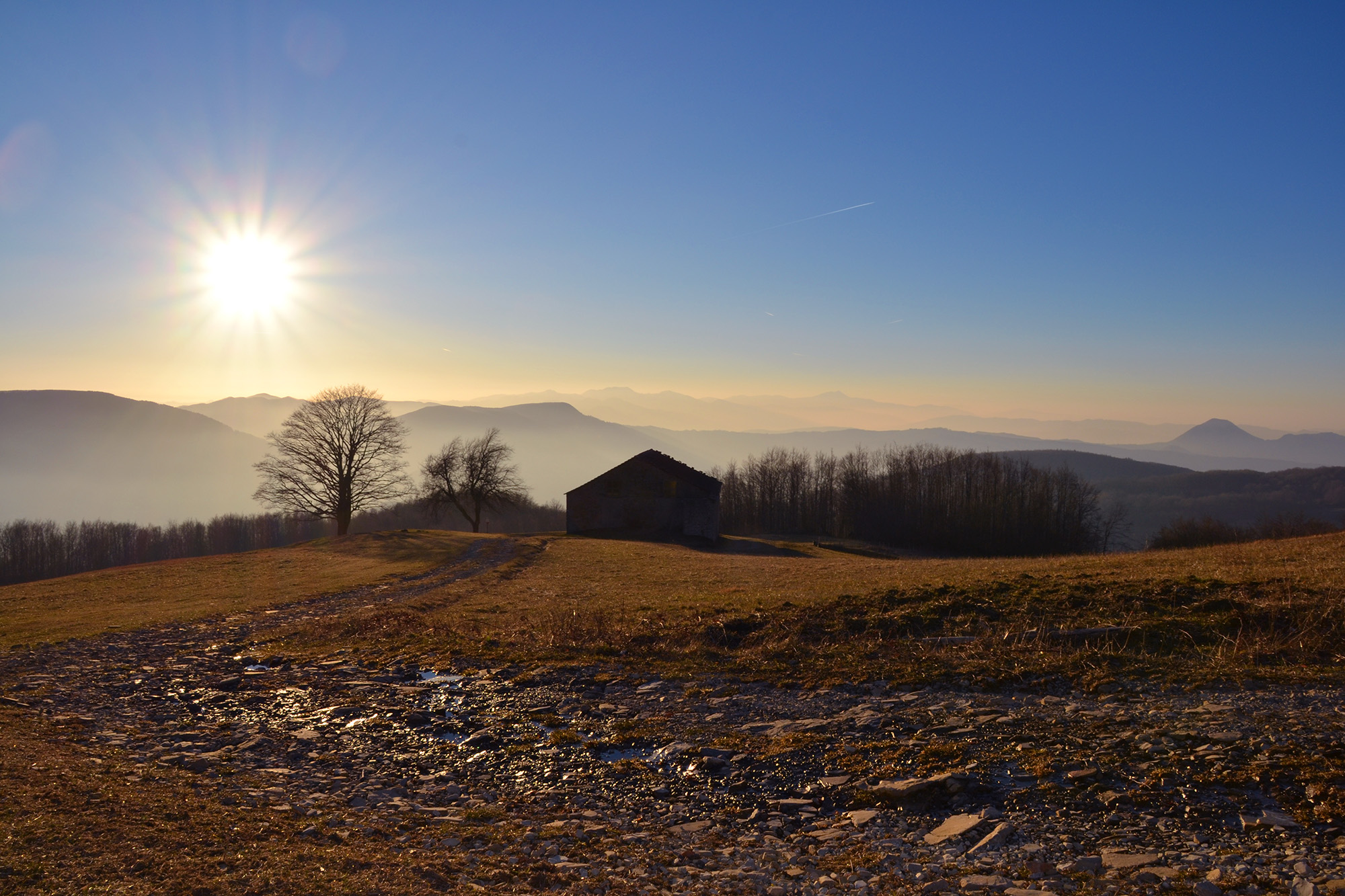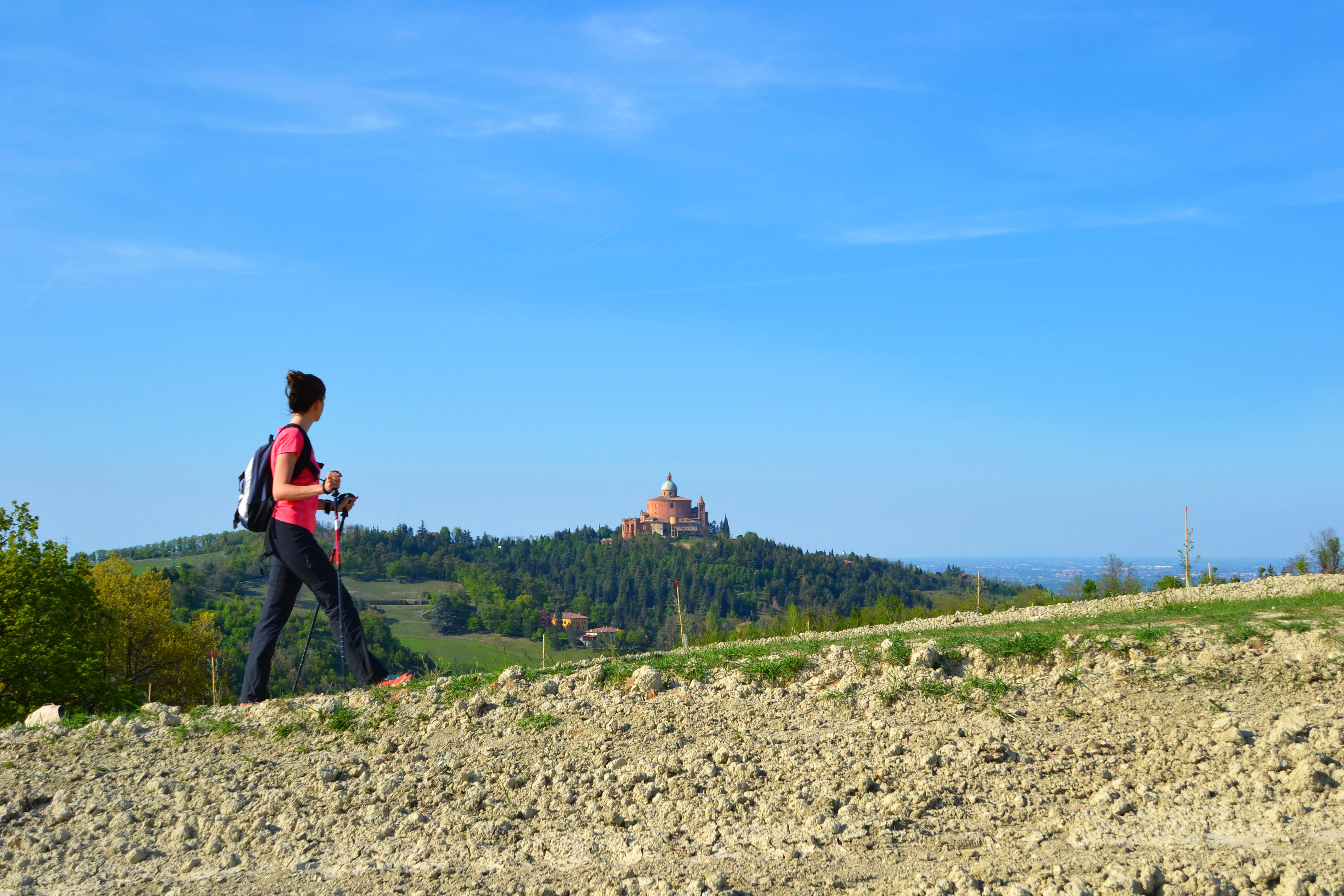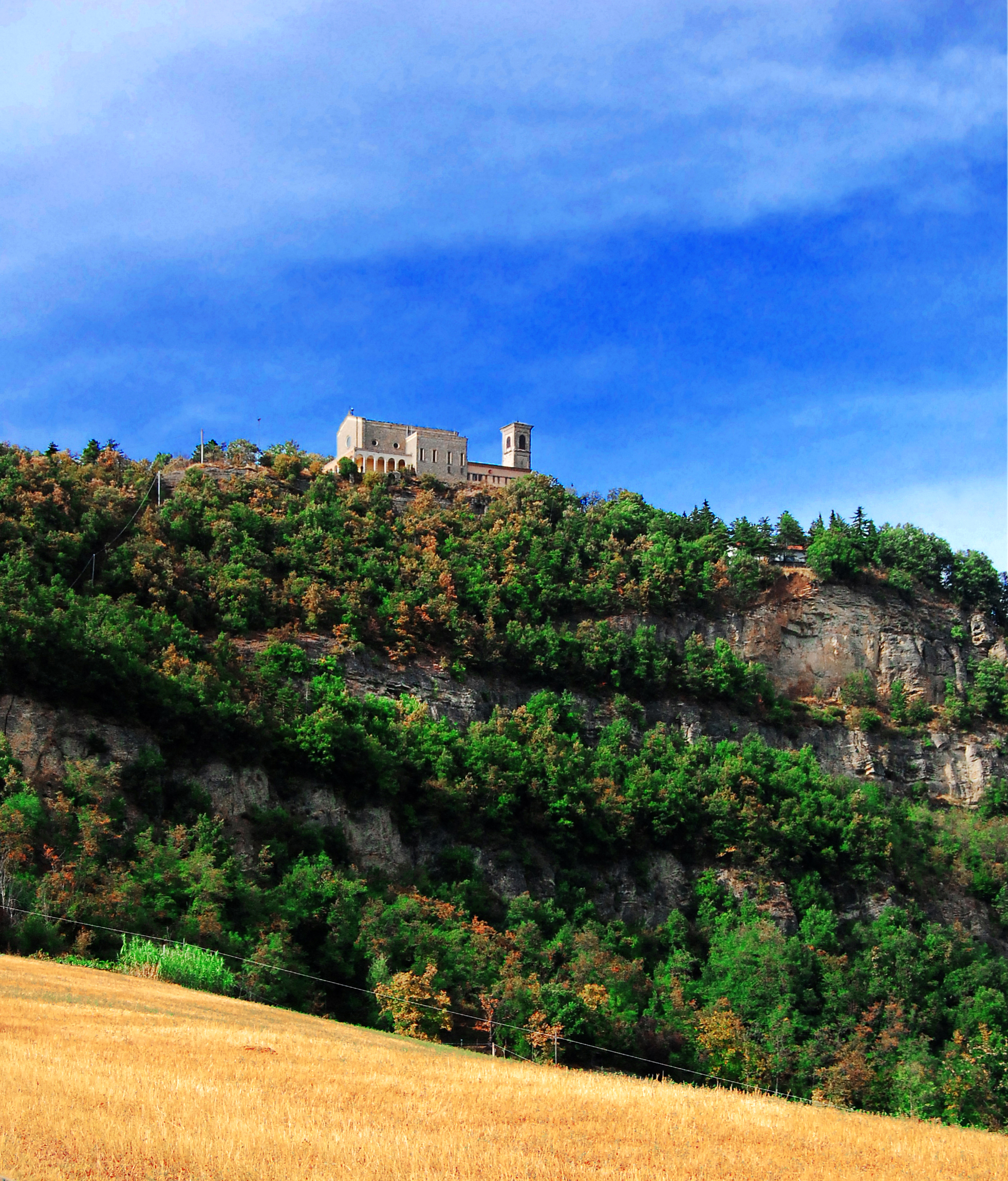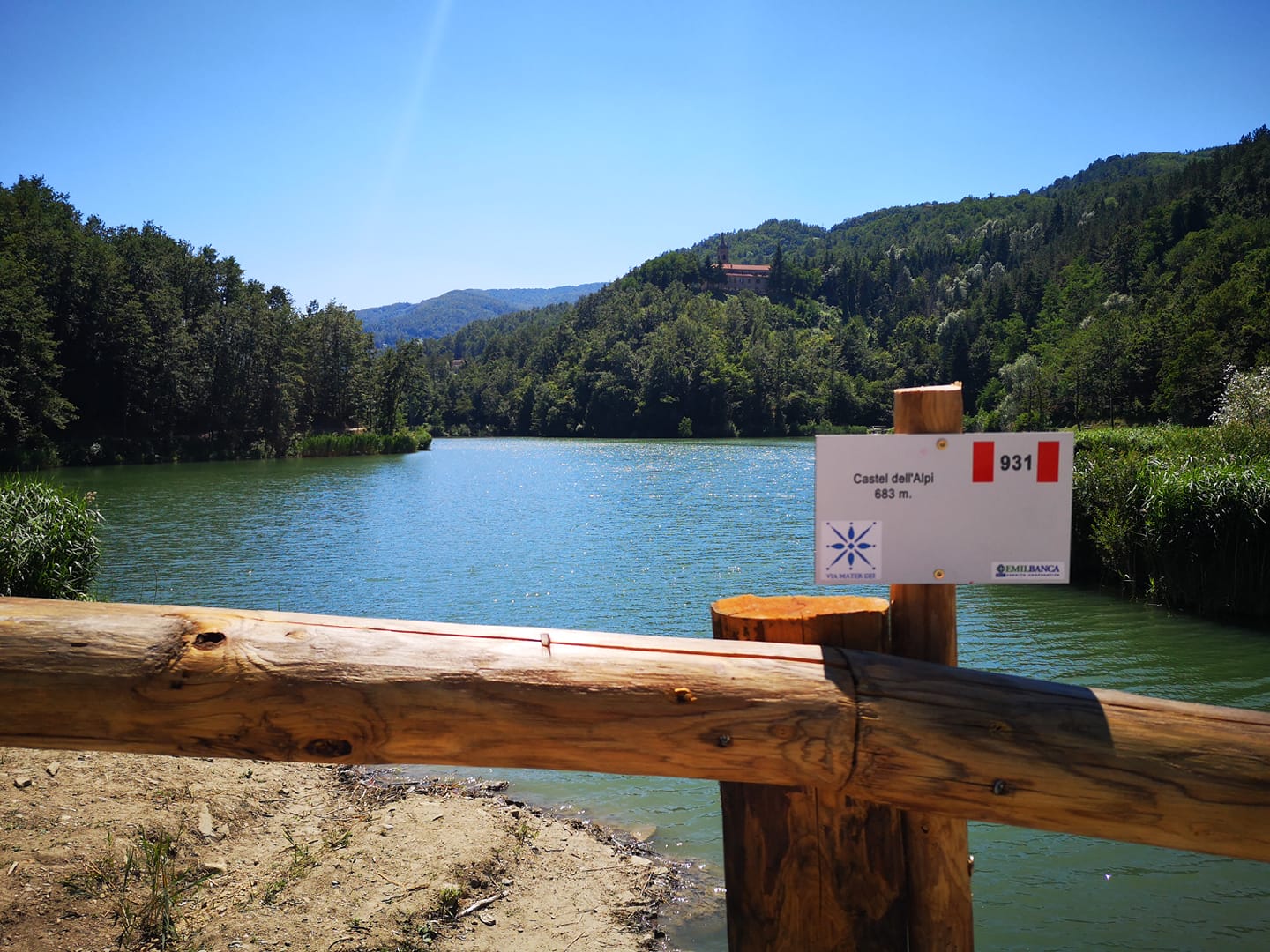Via Mater Dei
Updated on 30 June 2025 From Davide Sarti
157 km of trail between Bologna and the Apennines, through woods, villages, and mountains, to visit the most evocative Marian Sanctuaries in the area. The Via Mater Dei allows walkers to rediscover, step by step, the slow rhythm of nature and the deep connection between humans and the landscape.
The first leg of the Via Mater Dei starts from the center of Bologna, in front of the Church of Santa Maria della Vita, which houses the famous Lamentation over the Dead Christ by Niccolò dell’Arca. From there, you walk along the world’s longest portico to reach the Sanctuary of the Madonna di San Luca. This marks the beginning of the crossing of the Bolognese hills, through woods, ridges, and parks such as Monte Paderno and Cavaioni. After a series of ups and downs surrounded by nature, you finally arrive in Rastignano, where there is an oratory with lodging for organized groups of pilgrims.
Length: 20,4km
Elevation gain: +734−705
Duration: 7 hrs
The second leg crosses the peaceful Val di Zena: upon reaching the summit of Monte Calvo, walkers will find the Mater Pacis altar, dedicated to the fallen of all wars, offering a splendid 360° view. Descending into the valley along the paths once explored by speleologist Luigi Fantini (to whom a dedicated trail now exists), you first pass through the abandoned village of Gorgognano and then reach the site where the famous Pliocene whale was discovered, now commemorated by a sculpture created by students from Bologna’s Academy of Fine Arts.
Length: 20,4km
Elevation gain: +772−675
Duration: 7,5 hrs

The third leg begins with a climb past the ancient Castle of Zena, the Torre dell’Erede, and the Museum of the Botroids, which houses anthropomorphic rocks that tell millions of years of geological history. You then reach the evocative Sanctuary of Monte delle Formiche, nestled among woods and ridges. The path continues downhill to Castelnuovo di Bisano, with the church of San Giovanni Battista, and then passes through the archaeological and naturalistic area of Monte Bibele. The leg ends with one last climb to the village of Loiano.
Length: 22,6km
Elevation gain: +1355−849
Duration: 8,5 hrs
Leaving Loiano, the trail heads toward the Astronomical Observatory, where visitors can enjoy spectacular shows in the digital planetarium. The path then descends to Gragnano, home to the church of Santa Maria Assunta, and climbs again along the Way of the Cross to Monte Calvario. After reaching the Sanctuary of Madonna dei Boschi, you arrive in Monghidoro, a historic stopover between Bologna and Florence. The trail then descends into the Savena Valley to Piamaggio, home to the Sanctuary of the Madonna of Pompei and two local museums: the Museum of Peasant Civilization of the Bolognese Apennines and the Small Museum of the Emigrant. The leg culminates with a view of Lake Castel dell’Alpi and one final short climb to the sanctuary of Madonna dei Fornelli, a historic junction and arrival point that connects to the Via degli Dei (Path of Gods).
Length: 25,4km
Elevation gain: +1116−1091
Duration: 9 hrs

This leg begins at the sanctuary of Madonna dei Fornelli, where the path climbs through the woods, passing characteristic villages such as Qualto, Montefredente, and Ca’ de’ Santoni, with a brief glimpse of the church of Pian del Voglio. You cross a forest of beech and fir trees until you reach Bruscoli, the only spot of the via Mater Day in Tuscany, an ancient village rich in Etruscan and medieval history. The path then follows the Biscione and Gambellato streams, passes through Roncobilaccio, and climbs toward the Sanctuary of Boccadirio. Finally, you reach Baragazza, with its 18th-century church dedicated to Saint Michael.
5th Leg A
Madonna dei Fornelli-Bruscoli:
Length: 13,9km
Elevation gain: +524−554
Duration: 4,5 hrs
Bruscoli-Baragazza:
Length: 10,3 km
Elevation gain: +442−526
Duration: 4,5 hrs
5th Leg B
Length: 24,2 km
Elevation gain: +966−1080
Duration: 9 hrs
The sixth leg begins in Baragazza, skirting Poggio Castello and descending to the Setta stream. From there, you climb to Castiglione dei Pepoli, from which a panoramic ridge leads to Monte Catarelto, the scene of intense battles during World War II. The trail continues through the villages of Lagaro and Ripoli, ending at the evocative Sanctuary of Santa Maria della Serra.
Length: 25,2 km
Elevation gain: +988−1124
Duration: 9 hrs

The seventh and final leg follows the Brasimone stream and its ancient mills, then climbs to the enchanting Sanctuary of Montovolo, where you’ll also find the Oratory of Saint Catherine of Alexandria and a memorial path dedicated to the Salvemini School tragedy in Bologna, where a military plane crashed into a school in 1990. From the summit, the trail descends toward Riola di Vergato, passing the fascinating medieval villages of Sterpi and La Scola, and walking beside the intriguing Rocchetta Mattei. The arrival, in front of the Church of Santa Maria Assunta designed by Alvar Aalto, is the perfect conclusion to a journey that intertwines history, nature, and spirituality.
Length: 18,7 km
Elevation gain: +802−1117
Duration: 7,5hrs
The Via Mater Dei is not just a walk through nature: it is a true journey through breathtaking landscapes, ancient villages, and places steeped in history and spirituality. A physical path, but also an inner one, that invites you to slow down, breathe, and rediscover the meaning of walking.
On the official website you’ll find the legs, GPX tracks, and all the useful information to help you plan your journey.

| Brochure | Via Mater Dei | Download |
